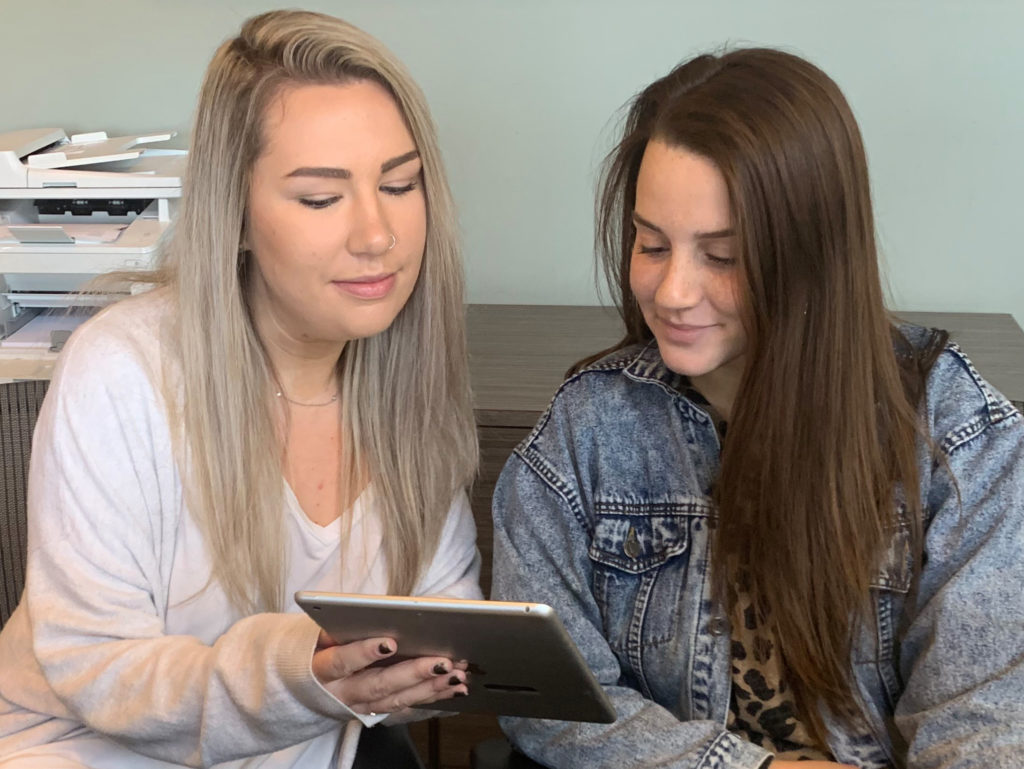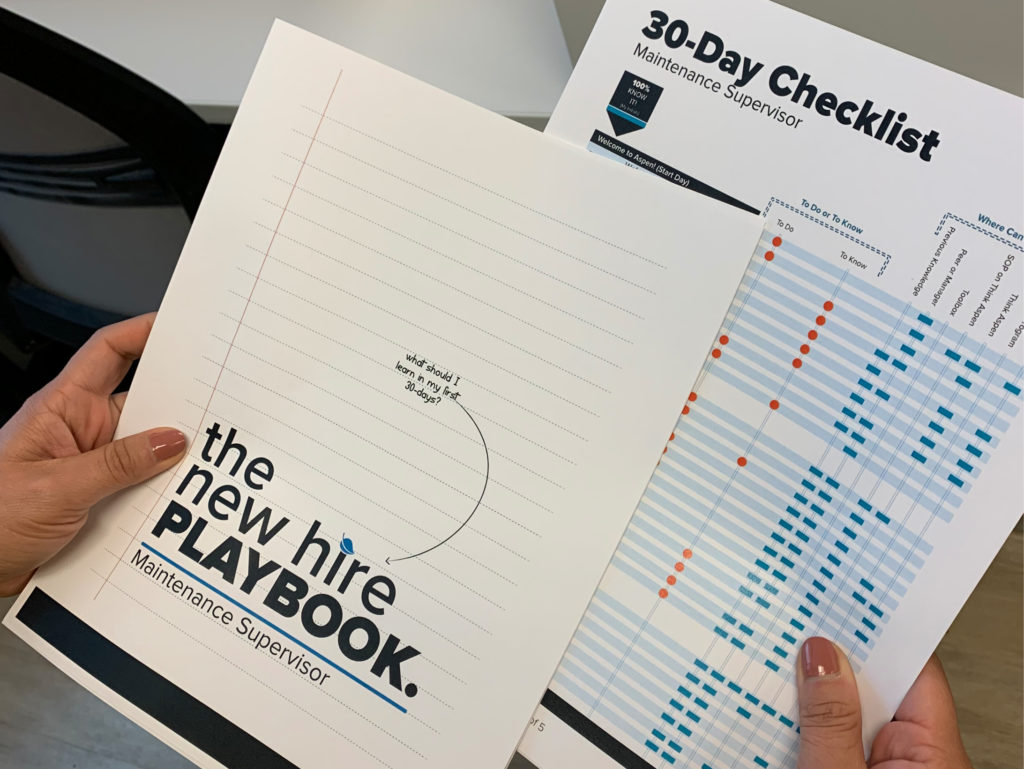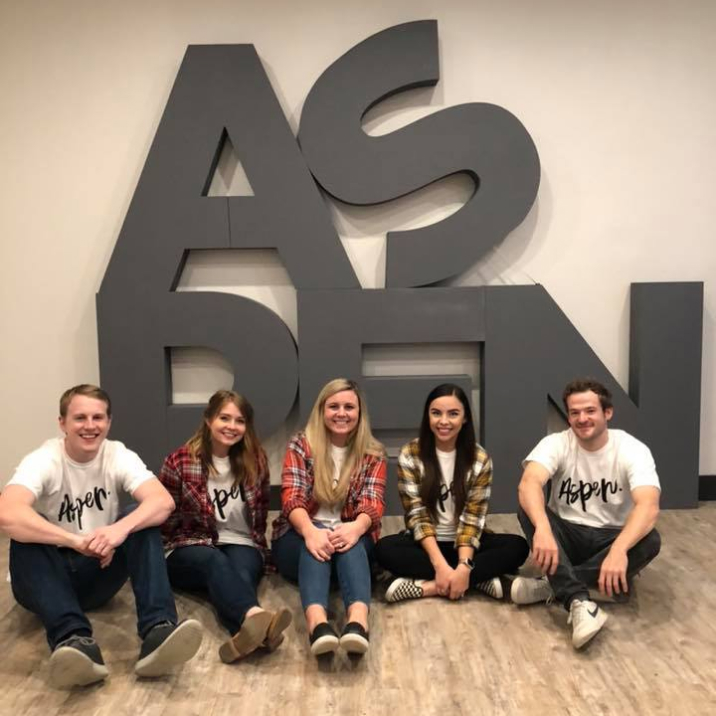Part Art, Part Science: How to Create Training Guides
Chris Amrich Director of Business Process, Aspen Heights PartnersNothing beats on-the-ground experience…
Looking back on the path that brought me to business process, I couldn’t have asked for a better start in the industry. Getting my feet wet as a marketing assistant and leasing agent meant I had exposure to the everyday life of a property: from resident needs all the way through corporate pressures.
I saw firsthand what maintenance techs experience attending to units in tight timeframes; I learned how to shape property tours so they truly catered to prospects’ interests. Above all, in my first student housing role, I benefited from a fairly loose set of policy guidelines in place. As I advanced positions and started to hire and train other student workers, I essentially had a blank canvas in front of me.
It was up to me to figure out what employees needed to know to be successful in a range of roles. Then, I had to create polished, widely-accessible training tools to help them thrive. Here’s how I experimented in those early days — and why the results still shape my everyday work directing business processes with Aspen.

The power of a blank canvas.
As an undergrad starting to manage other college students working in rental housing, I had one gut instinct right from the beginning: no one would want to read a really long manual. I decided my best bet would be to craft job guidelines in a “quick tips” style format, a layout that included bullet points and plenty of visuals to demonstrate job responsibilities.
Luckily, my tactic paid off: laminated and posted in highly-visible places, these write-ups seemed to answer any and all employee questions about how to log a package or complete other standard tasks of the trade. Still, I was very conscious of the fact that the local undergrads we were hiring might have no previous experience in a workplace. So, I decided it would be helpful to go a step beyond typical onboarding and train them through a shadowing approach.
I would demonstrate the job responsibilities as they looked over my shoulder and asked questions. Then, we would switch so that they could get hands-on experience for themselves as I provided feedback. I noticed this style really struck a chord with students; they felt comfortable bringing up concerns before anything boiled over.
In the end, my early days as a supervisor helped me realize that training (and subsequently creating training policies) has to be an interactive process. First, I had to create a safe space where student employees could ask questions. Yet, the benefits were powerful: this paved the way for trainees to reveal any pain points they experienced surrounding the job’s requirements. From there, a truly collaborative effort unfolded where student employees and I could, through trial and error, refine the company’s approach to training for that position.
“In the end, my early days as a supervisor helped me realize that training (and subsequently creating training policies) has to be an interactive process.”
Needless to say, this was when I started to realize... I was much better at business process analysis than at marketing, my own department at the time! However, the deal was finally sealed for me during a memorable exchange I had training a hire in leasing tours.
When shaping process, start by listening.
Whether they work for a student community or in conventional multifamily, most people in the rental housing industry have heard this less-than-flattering phrase: “point-and-show tour.” It describes the kind of tour where a leasing agent simply presents what’s on offer — without catering the experience to the prospects’ actual interests.
The saying came to mind back at my first rental housing company, where I got word that a new student leasing agent was having trouble getting prospects to sign after tours. When I shadowed her in action, I realized the issue immediately: she was sharing general information about the property amenities instead of letting the prospects lead the interaction.
At Aspen, we have a pretty funny saying when it comes to prospect tours: “talk 20% of the time, listen 80% — it makes you sound better.” I wasn’t working for the company at the time I managed this leasing hire, but I had a similar sensibility, even then. So, I kindly asked to meet with her so I could share some feedback. When I asked about her tour style, my colleague expressed that she thought her approach was the best way to show off the property’s many perks.


I responded by helping her think about tours from the renter’s perspective; rather than promote distinctive features of a housing community, ask the prospect what they care about most. By listening hard for the prospect’s “ace, king, and queen” items, you have the best possible chance of closing the deal. Luckily, my colleague got excited about this totally new lens on tours. She started to ask the right questions from the beginning, letting prospects reveal the key issues they wanted to hit during a tour. The results were powerful: this new hire dramatically improved her close ratio.
Above all, the experience taught me that listening truly opens doors. Before I could help adjust my colleague’s approach, I needed to carefully hear out her reasoning. More importantly, the exchange made me realize: to give prospects (and renters) the best possible level of customer service, student and multifamily operators need to first listen to their own employees. Once you address their training gaps, you have the foundation you need to look outward and give prospects a quality experience.
“...listening truly opens doors. Before I could help adjust my colleague’s approach, I needed to carefully hear out her reasoning.”
After this eye-opening management experience, I committed myself to work toward a role in business process — so I could try and effect training changes on a much larger scale than one department. Soon enough, I earned a role as a Business Operations Analyst with Aspen Heights, working my way up until I reached Director this year.
Now, my team and I approach business process creation with three phases in mind: listening, engaging, and experimenting. Here’s a sense of our collaborative approach.
Listen, engage, experiment: how to build a process.
Aspen Heights takes process improvement very seriously. To us, it's not enough that a process is in place; we evaluate our procedures on a regular basis. The idea is to ensure they suit staff members’ needs, leveraging current technology and incorporating new tools that make an employee’s day-to-day easier than manual approaches.
When my team is tasked with creating or refining a business process, we start by listening. Our staff listens to the vision an Aspen executive or department lead has in mind. From there, we ask questions of the staff whose everyday routine would be affected by the changes. We learn their pain points; we hear their suggestions for improvement.
With this mix of information in mind, we engage with these staff members about the “why” of the business process we’re working to build or improve. We find it’s critical to include team members of all levels in this kind of decision-making, because people want to feel deep down that they’re contributing to the big-picture, to the mission of our company.


So, we explain with appropriate detail why their piece of the puzzle affects others, and how the proposed change will improve these connections. It sounds simple, but Aspen has seen over the years that people are much less afraid of change if they know why things are evolving.
Once this listening and discussion phase winds down, we get to the writing phase of business process. To ensure our guidelines are broadly accessible, we write in a clear, direct tone and weave in plenty of visuals to make sure learners of all types are on the same page with a process. Then, we select certain employees to have them experiment with our new or revised procedure. As they provide feedback on what works and doesn’t, we make revisions until everybody’s satisfied.
“To ensure our guidelines are broadly accessible, we write in a clear, direct tone and weave in plenty of visuals...”
On the maintenance side a few years back, we purposefully collaborated with an employee who was very opposed to new technology, who had always used pen-and-paper for quarterly inspections. He was hesitant to switch to our new digital platform (Happy Inspector). Naturally, we wanted to make sure he was comfortable with the product. We also wanted others on his team to be convinced that even the product’s biggest adversary could see the light.
So, we collaborated with this employee for our business process testing — engaging him to help launch quarterly inspections through Happy Inspector for the first time. Ultimately, his resistance simply stemmed from a fear of change. But we were happy to discover his outlook changed quickly when he started to understand firsthand how the tool changed the game for efficiency. Suddenly, he could take photos on his phone instead of using a camera. He no longer had to spend time uploading and adding these shots to Excel or risk losing paperwork on a busy day of turn.
Once others in maintenance started to see this technician really buy in, they got excited about trying the product themselves. Over time, our maintenance team members started to feel grateful for the extra time they had in the day. Instead of spending lots of time on administrative tasks, they could devote many more hours to the work they truly cared about.
As this case shows, there’s tremendous value in partnering with employees who seem at first to be apprehensive toward business transformation. After all, there’s always a reason behind someone’s fear of change. By listening intently, you can find out what it is from the very beginning — and then work to form a healthy collaboration.
Last, but not least: recognize staff efforts.
 My team at Aspen feels it’s not enough to oversee a successful business change; we always strive to recognize the team members involved who trusted us and took a chance on something new. During our weekly “Listen and Learn” video calls with managers, we make sure to feature a team member who’s been part of a business process change that’s improved their everyday routine.
My team at Aspen feels it’s not enough to oversee a successful business change; we always strive to recognize the team members involved who trusted us and took a chance on something new. During our weekly “Listen and Learn” video calls with managers, we make sure to feature a team member who’s been part of a business process change that’s improved their everyday routine.
We’ll introduce them to corporate executives and say something like: “Erica, could you talk about the success you’re seeing in Springfield with this new procedure?” We find that this goes a long way in making our staff members feel heard and valued. As Aspen works hard to build a healthy work culture, we feel it's important to acknowledge team members who show enthusiasm even in changing times. After all, if there’s anything I’ve learned over the years in business process, it’s that student housing (and multifamily) are always changing!
